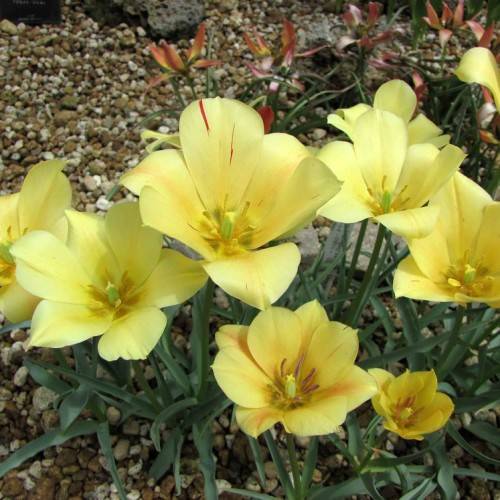
miscellaneous tulip
Tulipa batalinii
Cycle:
Perennial
Watering:
Average
Hardiness Zone:
4 - 8
Flowers:
Flowers In Spring
Sun:
Full sun
Leaf:
Yes
Growth Rate:
Low
Maintenance:
Low
Drought Tolerant:
Yes
Salt Tolerant:
Yes
Care Level:
Medium
watering
Miscellaneous tulip (Tulipa batalinii) should be watered moderately throughout its growing season, which runs from Spring to Summer. When its leaves and foliage are apllicable, the soil with 1-2 inches of water weekly. Conversely, in periods of very hot weather, the plant may need to be watered more frequently. To check if it needs watering, press your finger into the top of the soil and feel if it is dry. If it is, water the plant straight away, but ensure that the soil doesn't become oversaturated and the plant doesn't sit in excess water.
sunlight
Misc. tulips (Tulipa batalinii) thrive in bright, indirect light and usually require at least 5 hours of sunshine per day. If your garden or windowsill isn't exposed to direct midday rays, they'll likely do very well. Since tulips need both sunlight and cooler temperatures, the rising and setting sun is best for them. In the cooler, early morning hours, they absorb the warming light and when the sun is higher, they're protected from the intensity.
pruning
Mischevious tulips should be pruned lightly when they are dormant in late fall or early winter. Prune tulips immediately after flowering ends. This will encourage more flowers for the next season. To prune, deadhead the spent flower heads and any browning foliage. If necessary, trim off any diseased or damaged parts. For bushier growth, prune out a few of the tallest stems, leaving more of the shorter ones behind. Be careful not to prune too much, as this will reduce the flower display the following year.
